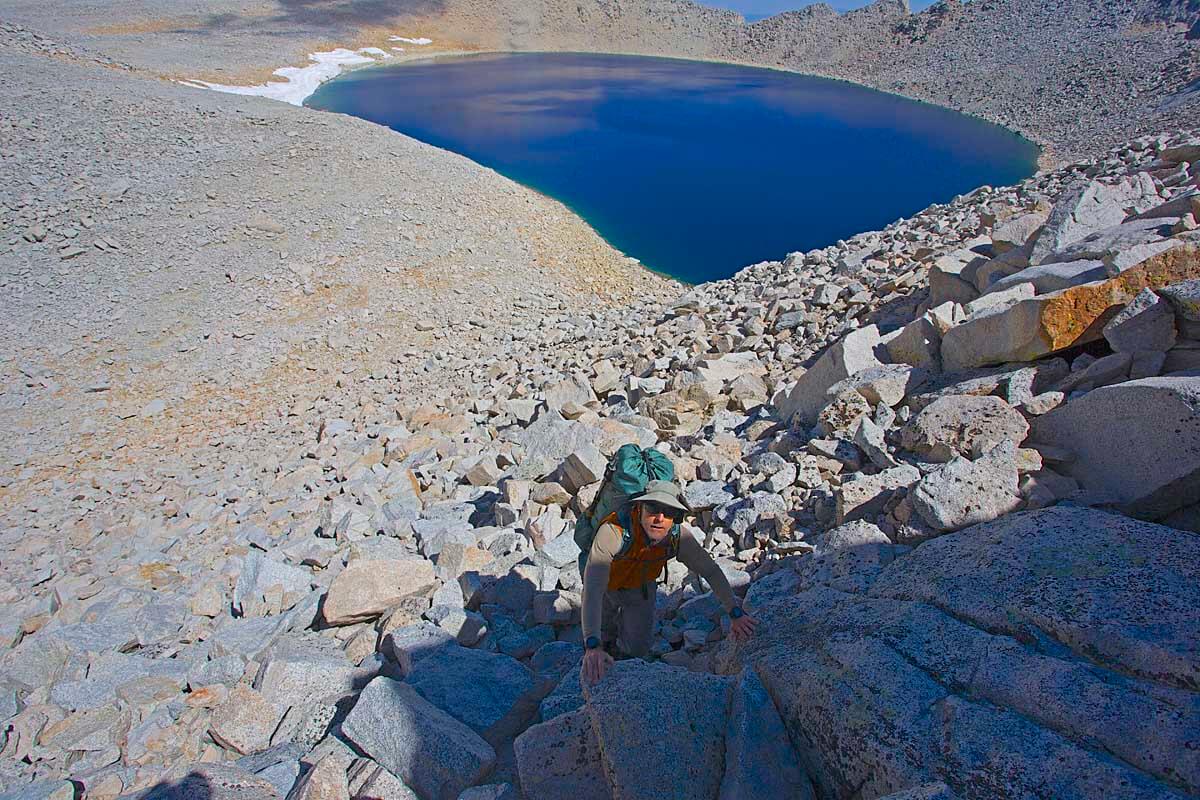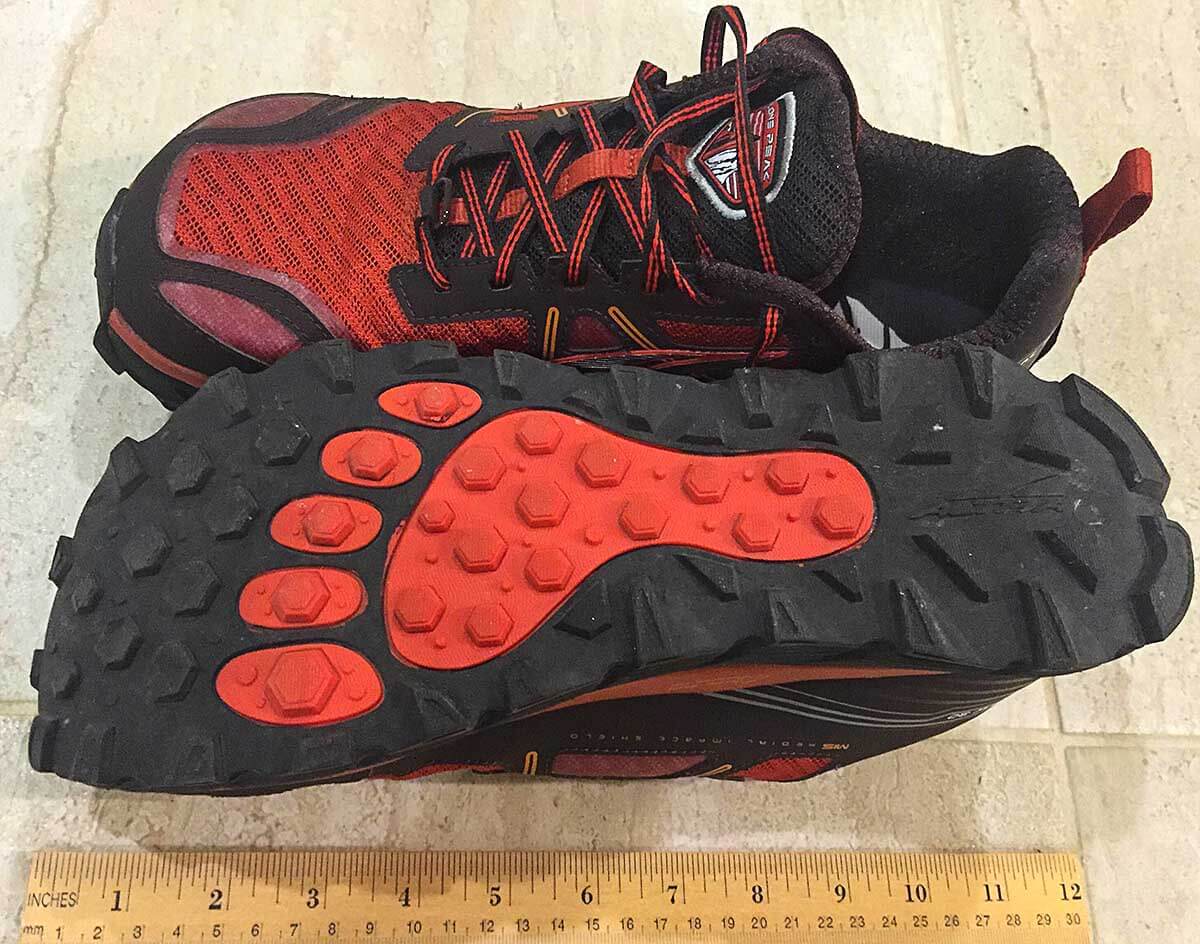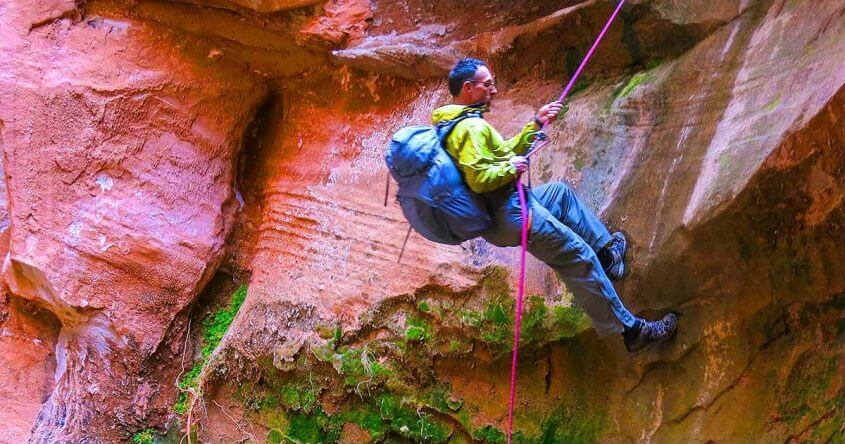Why You Should Make a Trip Plan and Leave it with Someone for Every Trip
Most people know about Aron Ralston of “127 hours,” who cut his arm off to save his life. A major take-away from this was that he should have left a Trip Plan with a friend. Something as simple as a short note saying where he was going and what to do if he wasn’t back on time would have gotten him help far sooner than 127 hours. This is why you should make a Trip Plan (even a very short one) and leave it with someone for every backpacking trip. [Picture above is the author about 12 miles from where Aron Ralston’s arm was pinned by a loose rock.]
You think disaster won’t happen on your trip – but you might be wrong
No matter how incredibly competent you are and how meticulously you’ve prepared for your trip, an accident or emergency can happen to just about anybody, at any time. It happened to Aron Ralston with a random loose rock. And similarly random things have happened and will happen to many others. A fluke accident, a flare up of a pre-existing medical condition, or even the odd event like an appendicitis, or acute altitude sickness, etc. can change your trip from fun to damage-control-mode in an instant.
The Life you Save Might be your Own! or Why you Should Make a Trip Plan
If you make a Trip plan you stand a much better chance of getting help or a rescue.
And stuff can happen. Personally in the last 5 years:
- I’ve participated in an immediate, life-threatening helicopter evacuation (not my bad).
- Received in-field medical instruction on how to lance an abscessed tooth though the gum with a pocket knife (yes, my tooth!).
- And locally we had a backpacker die, due in part to not having a Trip Plan and therefore, not getting rescued in time.
Finally, even if you don’t do it for yourself (or your loved ones!), make a Trip Plan as a courtesy to the Search and Rescue Personnel that may need to come look for you. These folks are mostly volunteer and it’s not respectful to have them spend countless days and hours searching for a missing person with little or no information.
What’s in this Article
The main purpose of this article is to make it fast and easy to make an effective Trip Plan. That way you’ll always do it!
- Templates to make your own Trip Plans. Instructions on how to create & use your own Trip Plans
- Who you should leave your trip plan with.
- Limitations of your Trip Plan (and SOS devices like DeLorme inReach and SPOT Satellite Messenger)
or What they can’t do for you…
What’s not in this Article
- A treatise on medical treatment for an emergency (Consider a Wilderness First Aid, or Wilderness First Responder course if you are interested)
- Advice on when you should (or should not) activate your SOS device. Always a topic of lively discussion!
The 3 Most Important Elements for a Trip Plan
It’s far better you make short Trip Plan than to not make one at all. In that vein, a Trip Plan needn’t be a lengthy or complicated.
Here are the 3 Most Important Elements for any Trip Plan:
|
For Aron Ralson, communicating this minimal amount of information via an email, text or phone call to a friend (in all of 1-2 minutes) would have likely had him rescued within 24 hours.

When you’re traveling off-trail in terrain like this it’s good to have a Full Trip Plan Document. On the Southern Sierra High Route. [photo Don Wilson]
Example Trip Plans – for you to fill out and use
Below is how to create your own Trip Plan from a Simple Trip Plan (“low risk” trips. e.g. hiking on the Appalachian Trail) to a Full Trip Plan (“high(er)” risk trips, e.g. dropped into Alaska by bush plane a zillion miles from anywhere). Note: Everybody has their own take on what is a risky trip. A low risk trip to one person may seem crazy risky to another person. As such, “Low Risk,” “Moderate Risk” and “High Risk” are in parenthesis for the rest of this article.
A Simple Trip Plan
When might you use a Simple Trip Plan?As stated previously, it’s far better you make short Trip Plan than to not make one at all. But here are some instances where a Simple Trip Plan might work well:
Example Trip: Section hike of the Appalachian trail with a friend (not solo) in seasonable weather |
Example of a Simple Trip PlanThe following is an example of a Simple Trip Plan. It takes the form of a short email to your trip-tracking-emergency-contacts. Obviously, if you want to include more information you can certainly use the more detailed template document, Full Trip Plan Document for Moderate to High Risk Trips (next box below), and fill it out with the information you feel is necessary and important for your trip. To: Trip-tracking-emergency-contacts
[Note that this quickly covers all of the “3 most important elements for a Trip Plan” in an email format] |
A Full Trip Plan for “Moderate Risk” and “High Risk” Trips
A Full Trip Plan is a lot more work! It includes things like the gear you are bringing including pictures of your shoe tread & tent; detailed information about each party member including wilderness experience, skills (including medical), personal medical history, etc.; extensive information about the communications electronics you are brining (including communication protocols between hikers and the emergency contacts), URLs for a map of the route, etc., etc. As such, you might not want to include all this information for a basic trip.
When might you use a Full Trip Plan?The following are some things to contemplate when you decide how “risky” your trip is and how much information you want to include in your Trip Plan:
“Moderate Risk” Trip Example: Week-long hike in the Sierra Nevada with a mixture of some on-trail travel and some off-trail side trips with sections of up to class 3 travel (scrambling on rocks using hands as well as feet—no rope needed). “High Risk” Trip Example: 1) A week-long technical canyoneering trip (class 5 rock climbing) in a remote and mostly untraveled desert canyon system. 2) Getting dropped in by float plane to white water pack-raft and climb in Alaska above the Arctic Circle. In these cases there will be more detailed trip information and likely use of a Sat. Phone. |
Full Trip Plan Document for Moderate to High Risk Trips – a template to fill out and useTemplate document – Full Trip Plan for Moderate to High Risk Trips. This is a link. Click to open Template.
|
Selecting an Emergency Contact to Give Your Trip Plan to
Here are some important factors to consider when selecting an emergency contact (trip-tracking-emergency-contact):
- Level headed and reliable. For me this is usually a close family member or one of my trusted hiking/climbing partners. I trust them to seriously monitor my trips and in an emergency do the right thing without drama.
- Familiarity with the area. If I am pack-rafting in Alaska I want someone that is familiar with the terrain and challenges of white water packrafting and land travel above the Arctic Circle. If I am on a Technical Canyoneering trip in Utah, I want someone experienced in canyon travel to be my emergency contact. With less specialized and technical terrain, there are far more people eligible to be emergency contacts.
- Responsiveness. In this day and age, especially for higher risk trips we might be communicating indirectly or directly with our emergency contact. This could be indirectly via location-check-ins or tracks from devices like a SPOT or inReach. Or it can be directly like text messages from an iReach or a call form a Sat. Phone. I want my contact to closely monitor these communications and quickly respond to things like an emergency, or if my trip track hasn’t moved in 24 hours and I haven’t notified them as to why. Or just to reply to my request for a weather update before climbing, etc.
The limitations of a Trip Plan and SOS Devices
Sometimes a timely rescue is not possible. A Trip Plan and/or a SOS Device like the DeLorme inReach and the SPOT Satellite Messenger is not the solution to everything. I have been in some extremely bad situations where rescue was not feasible even if I had sent out an SOS. As they say, the best rescue is self-rescue. And to state the obvious, Goal One is not needing rescue in the first place. So be sensible and safe out there.
Finally, a SOS device should never be considered a license to do silly things or take unnecessary risks.

A shoe tread picture for a Trip Plan Document. My Altra Lone Peak 3.0 trail running shoes.



